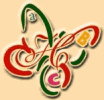 ur
exhibition guides visitors through the world of Hungarian music. Happily,
the boundaries of language do not restrict the spread of music, and
there was never any obstacle to prevent Hungarian music gaining the
acknowledgement of the world. Hungary has long been regarded as a
musical country. The names of Franz Liszt and Béla Bartók, Franz Lehár
and Imre Kálmán are known and cherished the world over. By the same
token, the Kodály method or Hungarian gypsy music are also internationally
recognised.
ur
exhibition guides visitors through the world of Hungarian music. Happily,
the boundaries of language do not restrict the spread of music, and
there was never any obstacle to prevent Hungarian music gaining the
acknowledgement of the world. Hungary has long been regarded as a
musical country. The names of Franz Liszt and Béla Bartók, Franz Lehár
and Imre Kálmán are known and cherished the world over. By the same
token, the Kodály method or Hungarian gypsy music are also internationally
recognised.
Music is best learnt about by listening to it through the medium of recordings. Thus in the centre of the exhibition space is a CD table, which presents a broad selection from recordings by Hungarian composers and performers. Besides introducing the musical treasures of the past, exceptional emphasis has been placed on music produced over the last decades, and thus you can learn about numerous composers who have not yet had the opportunity to become internationally recognised.
You can gain a further insight into the works of contemporary composers, and events in Hungarian musical life, using the tools of the modern media age. The Budapest Music Centre has kindly provided computers, which enable visitors to delve into those Hungarian music related databases which can also be found on the Internet. (If you require any help in operating the CD player or handling the computer, please turn for assistance to our hostess.)
Visitors can obtain an illustrated overview of different aspects of Hungary’s musical past and present from the circle of screens. Of the most significant Hungarian composers, Liszt and Bartók receive particular prominence as does Zoltán Kodály who was the moving force behind the choir movement and developments in musical pedagogy. Manuscripts and printed scores illustrate some important moments from their work. Besides these towering individuals, you can learn about the history of Hungarian music printing and opera performances, as well as the principal locations for Hungarian musical life. Furthermore, space is given over to some characteristic moments from folk music, operetta and light music, as well as a portrait gallery featuring the great Hungarian musical performers.
On the bookshelves, you will find a cross section of Hungarian musical book and score publishing. Besides the newest publications, you will find other widely acknowledged works from earlier decades. Along with the classics of music history, emphasis has been placed on providing summaries of researchers who deal with topics related to Hungarian music history. The story of Hungarian music in the 20th century confirms just what an important source folk music was for art musicians, and it is the research and popularisation of folk music which has remained to this day a central task of Hungarian musicalology. Of the scores, particularly worthy of attention are the pedagogical publications, which can provide a reliable basis to youngsters interested in music, in the areas of school vocal training as well as in learning an instrument. Besides the principal organs of Hungarian musical scholarship, there are also magazines which are devoured by music lovers.
 |
Frankfurt '99
Non-profit Organisation,
Budapest 1054 Báthori u. 10. Fax: +(36) 1 269 20 53 E-mail: frankfurt_99.kht@mail.matav.hu |
|